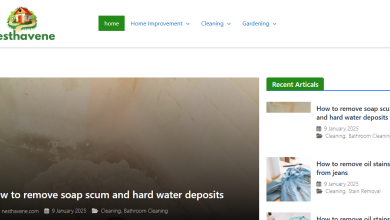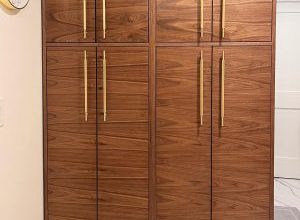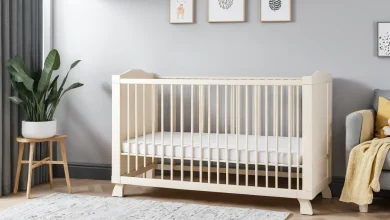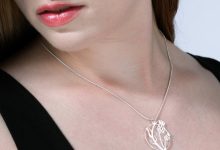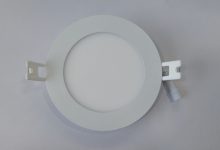A Complete Guide to Moroccan Handmade Rugs: From Weaving to Your Perfect Moroccan Rug

Moroccan rug are not just floor coverings; they are works of art steeped in history and cultural significance. Known for their vibrant colors, intricate patterns, and unique craftsmanship, these rugs have gained global admiration. If you’re considering adding one to your home, this guide will take you through the entire process, from understanding their history to selecting the perfect rug for your space.
-
The Rich History of Moroccan Rugs
Moroccan rugs, also known as Berber rugs, have been woven for centuries by the indigenous Berber people of Morocco. These rugs reflect the rich cultural heritage of the Berber tribes, who use traditional methods passed down through generations. Each rug tells a story, with patterns and symbols representing various aspects of Berber life, beliefs, and the environment.
The history of Moroccan rugs is deeply intertwined with the region’s nomadic lifestyle. Historically, these rugs were used to provide warmth in harsh desert conditions, to mark tribal identity, and to display wealth. Today, they continue to be a symbol of Moroccan craftsmanship and artistry.
-
The Weaving Process: From Sheep to Rug
The creation of a Moroccan handmade rug is a meticulous process involving several stages:
- Sourcing Materials: The journey begins with selecting high-quality wool, typically sourced from local sheep. The wool is washed, carded, and dyed using natural dyes derived from plants, minerals, and insects. Traditional dyes produce the vibrant colors characteristic of Moroccan rugs.
- Spinning and Dyeing: The cleaned wool is spun into yarn. This yarn is then dyed using a variety of techniques. The natural dyeing process is labor-intensive but results in rich, enduring colors that are both beautiful and eco-friendly.
- Designing and Weaving: Once the yarn is prepared, the design process begins. Traditional Moroccan rugs often feature geometric patterns, abstract designs, and symbolic motifs. The weaving process involves intricate knotting techniques, usually performed on a horizontal loom. This method ensures that each rug is woven tightly and consistently, resulting in a durable product.
- Finishing Touches: After weaving, the rug is washed and brushed to enhance its softness and sheen. Fringe and edging are also added, completing the rug and making it ready for use.
- Types of Moroccan Rugs
Moroccan rugs come in various styles, each with its unique characteristics:
- Beni Ourain: These are among the most famous Moroccan rugs, known for their minimalist design and plush texture. They typically feature simple geometric patterns and are often woven with white wool.
- Boucherouite: Made from recycled textiles, Boucherouite rugs are colorful and eclectic. They are often used as a statement piece and are valued for their sustainability and creativity.
- Azilal: Azilal rugs are vibrant and feature a mix of traditional motifs and abstract designs. They are known for their bold colors and intricate patterns.
- Kilim: Flatwoven and lightweight, Kilim rugs are perfect for low-traffic areas. They often have intricate patterns and are known for their durability and versatility.
- Choosing the Perfect Moroccan Rug for Your Space
Selecting the right Moroccan rug involves considering several factors:
- Purpose and Placement: Determine where the rug will be placed and its purpose. High-traffic areas may benefit from more durable rugs, while a statement piece can be placed in a less-used area.
- Size and Shape: Measure your space carefully and choose a rug that fits proportionally. Moroccan rugs come in various sizes and shapes, from small accent rugs to large area rugs.
- Color and Pattern: Moroccan rugs offer a wide range of colors and patterns. Consider the existing decor of your room and choose a rug that complements or contrasts in a way that enhances the overall aesthetic.
- Authenticity: Ensure that the rug you are purchasing is authentically Moroccan. Look for signs of traditional craftsmanship and verify the source if possible.
- Caring for Your Moroccan Rug
To keep your Moroccan rug looking its best, follow these care tips:
- Regular Vacuuming: Vacuum the rug regularly to remove dirt and debris. Avoid using a vacuum with a beater bar, as it can damage the fibers.
- Spot Cleaning: Address spills and stains promptly using a clean cloth and mild detergent. Blot the area rather than scrubbing to prevent damage.
- Professional Cleaning: Periodically, have your rug professionally cleaned to maintain its appearance and longevity.
- Rotation: Rotate the rug occasionally to ensure even wear and prevent fading from sunlight.
- Final Thoughts
Moroccan handmade rugs are more than just a home accessory; it is a piece of art and history. By understanding the weaving process, the types of rugs available, and how to choose and care for them, you can select a Moroccan rug that not only enhances your space but also connects you to a rich cultural tradition. Whether you’re drawn to the bold patterns of an Azilal or the subtle elegance of a Beni Ourain, a Moroccan rug is a timeless investment that will bring beauty and warmth to your home for years to come.
